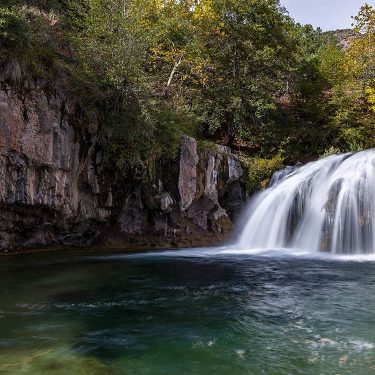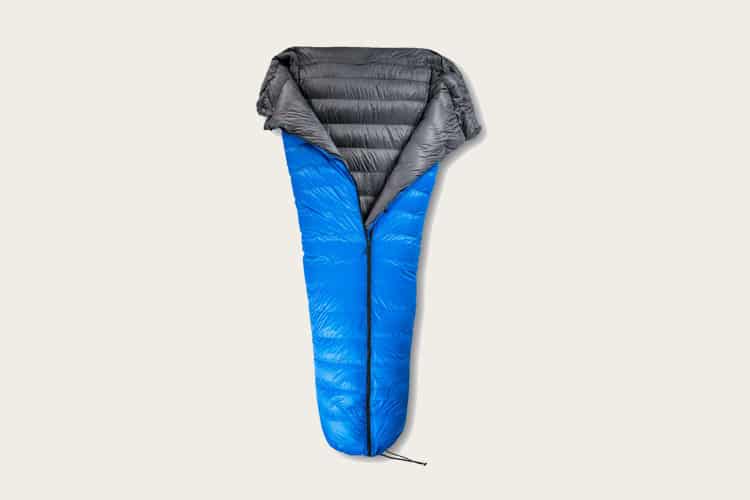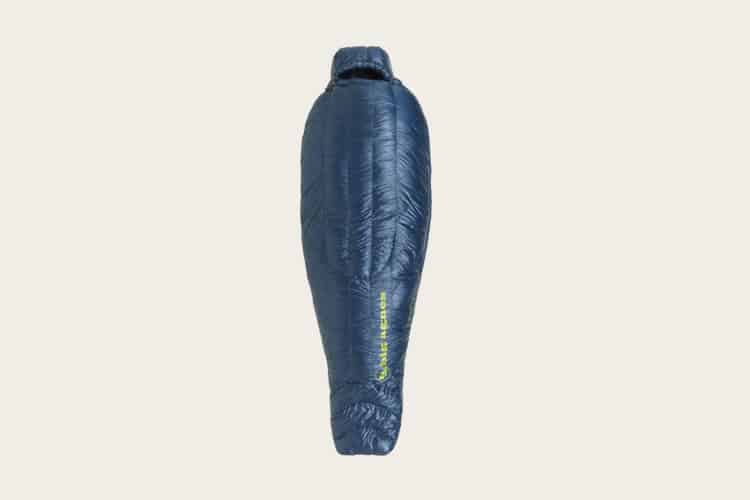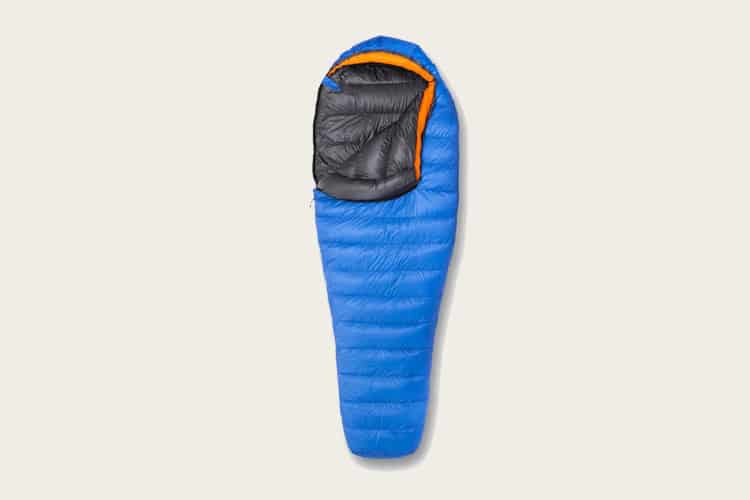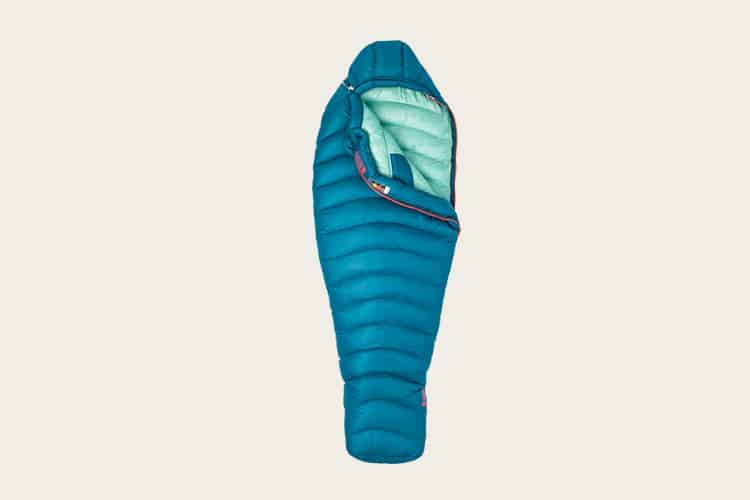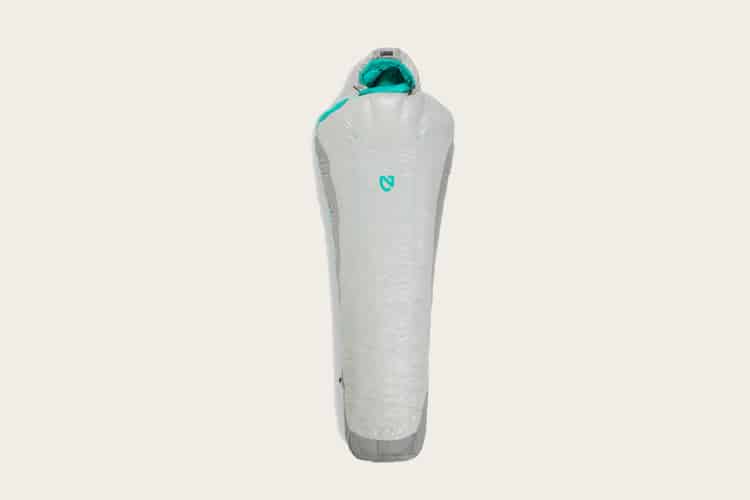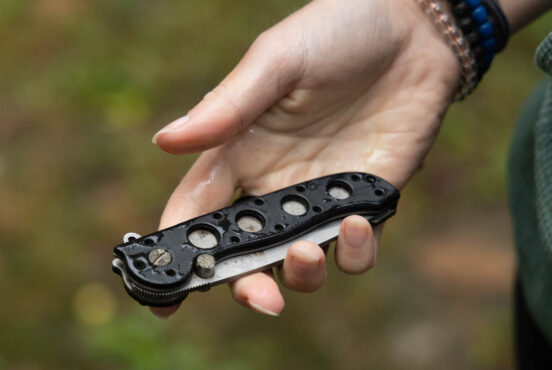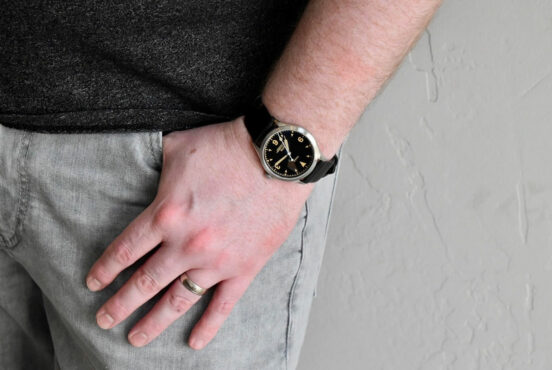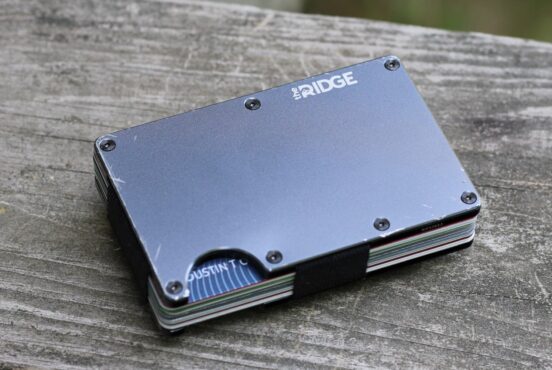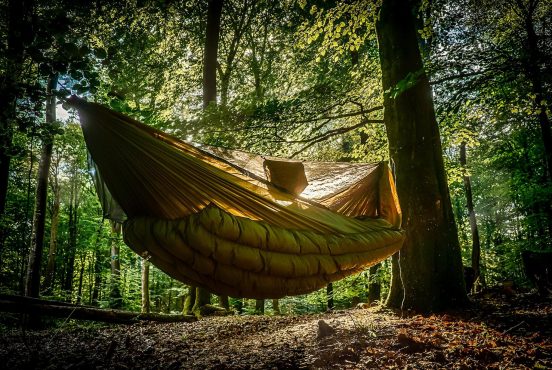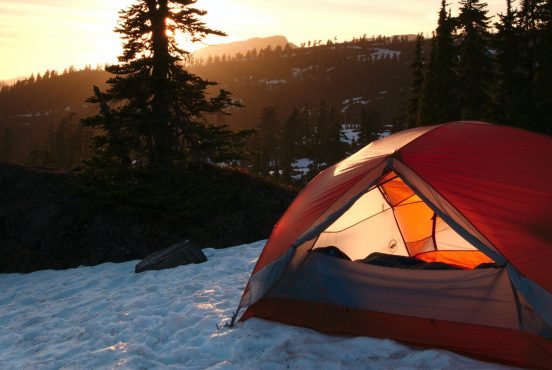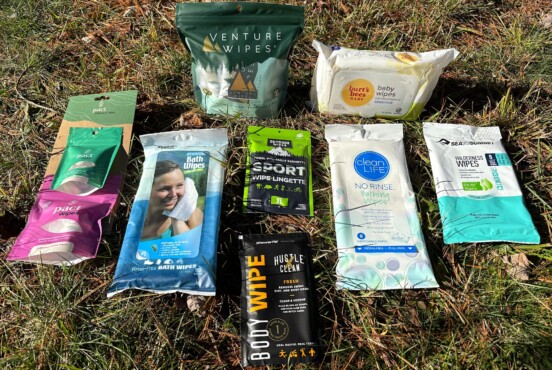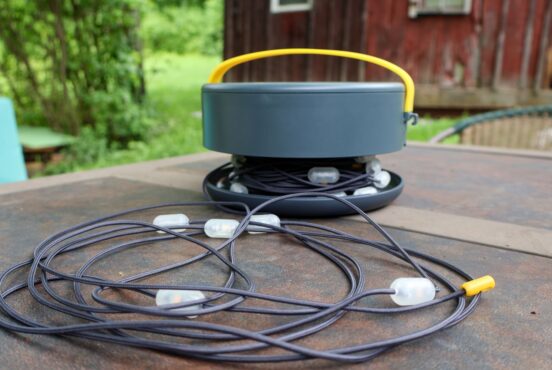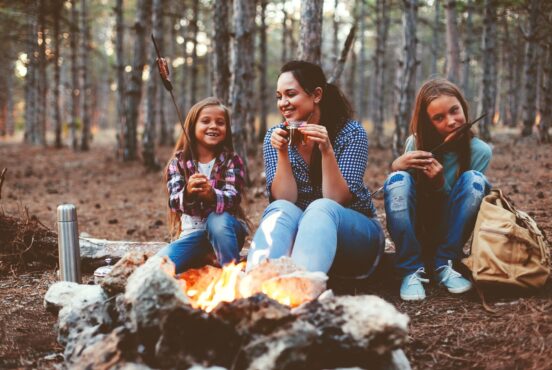Few things spoil a backpacking trip like freezing your ass off at night. After a few days of hiking and climbing with little sleep, even the best of us start to look like Jack Nicholson in The Shining.
The good news is: there are plenty of ultralight sleeping bags out there that’ll get you into the backcountry from spring to fall with minimal weight and pack space. A top-tier ultralight sleeping bag isn’t cheap, but it’s a worthy investment that’ll keep your pack light and your backside warm for years to come.
Buyer’s Guide
When you’re shopping for an ultralight sleeping bag, the warmth-to-weight ratio is king. Simply put, you want as much warmth with as little weight as possible.
There are a number of factors that contribute to the warmth-to-weight ratio. The actual weight and temperature rating are the most obvious indicators, but the type and amount of insulation, type of material, cut, width, and length are major players in the equation.
Weight
When attacking the greatest sources of pack weight (known as the Big 3: tent, backpack, and sleep system), an ultralight backpacker shoots for a sleep system that’s three pounds or less. Given the average sleeping pad weighs about a pound, that means a true ultralight sleeping bag should weigh less than two pounds.
There’s a little wiggle room with that figure, but 40 ounces is the absolute limit for ultralight backpacking.
Temperature Ratings
Manufacturers provide a temperature rating to help buyers understand a sleeping bag’s heat-retention capabilities. Temperature ratings are independently tested for veracity, but they can be a little misleading.
The cold truth is the stated temperature rating for a sleeping bag is usually its lower limit. You’ll survive the night if temperatures get that cold, but there’s a big difference between surviving and sleeping comfortably.
Here’s the golden rule for temperature ratings: take the stated temperature rating and add 10 degrees to estimate the comfortable limit.
Then, check the reviews to see what your fellow backpackers are saying about it. Follow this, and you’ll never have to worry about an underperforming sleeping bag.
Seasonal Ratings
Like the “ultralight” badge of honor, manufacturers use the term “three-season” pretty loosely. While it’s certainly up for debate, a true three-season sleeping bag should keep you warm down to at least 20℉. When you’re backpacking through colder regions or hiking up past the tree line, you may need to drop that recommendation down to 0℉.
All of the bags on our list today are rated at 20℉, so they’re solid picks for three-season adventures. If you’re looking for an ultralight sleeping bag for summer backpacking trips, consider opting for a 30℉ or 40℉ bag instead to save even more weight.
Insulation
When you’re going ultralight, down insulation is the only option. Genuine down — whether it’s goose, duck, natural, or hydrophobic — will always weigh less and compress better than synthetic insulation. More importantly, it’ll keep you warmer with less weight as genuine down retains heat better than synthetic insulation.
Once you get past the sticker shock that comes with upgrading from synthetic to down insulation, here are a few pointers on what to look for in a sleeping bag with down insulation:
- Goose vs duck: geese produce larger down balls that provide greater insulation for less weight. However, there are far more sustainable/responsible duck farms than goose farms, so goose down carries a premium price tag. Go with goose down if you can afford it, but don’t be afraid to snap up a good deal on duck down if it fits your budget better.
- Hydrophobic treatments: Manufacturers can apply a hydrophobic treatment to down to improve its water-resistance and dry time. This can be helpful when backpacking in moist environments, as down loses its heat-retention capabilities when wet.
- Fill power (fp): Fill power measures how many cubic inches one ounce of down occupies, or how much loft the down can produce. Down with greater loft does a better job trapping air and providing insulation. A higher fill power translates to a better warmth-to-weight ratio.
Materials
To save weight, most manufacturers use 10-denier nylon ripstop fabric on ultralight sleeping bags. 10D nylon ripstop is soft, lightweight, and breathable, but it’s not as durable as a higher-denier fabric. You’ll need to be careful with ultralight sleeping bags to avoid rips and snags. It’s a good idea to bring along a patch kit, too.
You also need some type of DWR (durable water repellant) coating to block out the moisture. Don’t expect your sleeping bag to be fully waterproof, but it should be able to block out condensation, dew, and perspiration.
Size
Many of the negative reviews you’ll see for ultralight sleeping bags are from campers who purchased the wrong size. It’s frustrating when this happens on the trail, but it’s an easily avoidable mistake.
Ultralight sleeping bags don’t waste any space, so they’re always going to be pretty snug. Measure your shoulders, your waist, and even your feet, then compare those measurements against the manufacturer’s recommendations. To be safe, check the reviews to see if it runs small.
The Best Unisex/Men’s Ultralight Sleeping Bags
Now that you know what to look for, let’s take a look at the best ultralight sleeping bags that deliver a superior warmth-to-weight ratio.
Feathered Friends Flicker UL 20
A perennial favorite of ground sleepers and hammock swingers, the Feathered Friends Flicker UL 20 is the most versatile sleeping bag on our list.
On warm summer nights, the unzipped bag functions as a large quilt that’s big enough to cover two adults. When the temperatures start to drop, use the drawcord to create a toasty footbox or zip it all the way up for a full center-zip mummy bag. Hammock campers get the best of both worlds, as the Flicker UL 20 works as a top quilt or underquilt using the small webbing loops.
Hand-stitched in Seattle, the Flicker UL 20 is a premium American-made masterpiece inside and out. The 950+ fp goose down is ultralight, highly compressible, and does an excellent job of retaining body heat on cold nights. Protecting the ultra-premium down is a Pertex Endurance 10D ripstop nylon shell that’s water-resistant, breathable, and lightweight.
The Flicker UL 20 features a draft collar with two easily accessible drawcords, a YKK #4 fully separating zipper, and a crossover zipper design that eliminates the need for a draft tube.
Check Current PriceTech Specs
- Temperature Rating – 20℉
- Insulation – 950+ fp goose down
- Weight – 26 oz. (regular), 27 oz. (long)
- Fits – 6’ (regular), 6’6” (long)
Big Agnes Hitchens UL 20
When you’re counting ounces and pressed for pack space, go with the Big Agnes Hitchens UL 20. It’s ultralight at 27 ounces, compresses down to 6” x 7” with compression straps, and doesn’t sacrifice quality or durability to pull it off.
The Hitchens UL 20 uses DownTek 850 fp goose down insulation that’s water-repellent, PFC-free, and bluesign approved. Combined with the lightweight, high-tenacity nylon ripstop DWR shell, you’ll never have to worry about soggy down from condensation, perspiration, or dew.
The Hitchens UL 20 employs a traditional mummy shape with Insotect Flow construction and body-mapped baffles to optimize thermal efficiency. The vertically structured sidewalls and contoured baffles do an excellent job of trapping heat closer to your body. There’s also an ergonomic foot box at the bottom with extra loft and warmth for toasty toes.
Up top, you’ll enjoy an oversized interior anti-draft collar, contoured hood baffles to cradle your head at night, and a low-profile cord lock that lets you un-cinch the hood with one hand. There’s also a 3D anti-snag draft tube to prevent heat loss around the YKK #5 zipper.
When you need to boost the bag’s temperature rating for colder three-season trips, use the interior fabric loops to easily attach a sleeping bag liner. Back home, you can hang the bag in your closet using the streamlined exterior loops, or you can toss it in the mesh storage sack.
Check Current PriceTech Specs
- Temperature Rating – 20℉
- Insulation – DownTek 850 fp goose down
- Weight – 25 oz. (small), 27 oz. (regular), 31 oz. (long)
- Fits – 5’5” (small), 6’ (regular), 6’6” (long)
The Best Women’s Ultralight Sleeping Bags
Ladies — why settle for a unisex sleeping bag when you can go with a product that’s tailored for you?
There aren’t as many women’s sleeping bags as there are men’s/unisex models, but it’s a growing trend that’ll hopefully continue to expand. These sleeping bags take the female form into account by adding some extra space where it’s needed, tightening the bag in other areas, and adding extra insulation in places where female campers tend to experience cold spots.
Feathered Friends Egret UL 20
Sometimes it’s tough to crown a champion when the field is so competitive, but in this case the Feathered Friends Egret UL 20 is a clear winner. If you’re looking for the best women’s ultralight sleeping bag, this is it.
The Egret UL 20 is tailored for the female form with extra fill around the chest and in the footbox for enhanced insulation. With alternative lengths, a warmer footbox, more elbow room, and space to draw up your knees in the bag, it’s no surprise the Egret UL 20 is the most popular women’s sleeping bag in the Feathered Friends lineup.
Like the Feathered Friends Flicker UL 20, the Egret UL 20 uses premium 950+ fp goose down and a breathable Pertex Endurance 10D water-resistant shell. The continuous baffles let you position the insulation where you need it, while protecting against unintended downshifting.
The Egret UL 20 features a passive collar with extra down cushioning around your neck, and a 3D contoured hood that you can cinch tight to trap the heat in your bag. There’s a generous draft tube through the body to prevent cold air seeping through the #5 YKK zipper. At the bottom, your toes will enjoy a trapezoidal footbox that complements the natural pose of your feet without compressing the sides.
Check Current PriceTech Specs
- Temperature Rating – 20℉
- Insulation – 950+ fp goose down
- Weight – 25.6 oz. (small), 27.2 oz. (medium)
- Fits – 5’3” (small), 5’9” inches (medium)
Marmot Women’s Phase 20
The Women’s Phase 20 takes the best features of the unisex Phase 20 and applies a specialized fit for female backpackers. With extra insulation in key areas, you’ll emerge from your toasty cocoon each morning as a beautiful, well-rested butterfly.
The Women’s Phase 20 uses gobs and gobs of 850+ fp goose down, because more down is never a bad idea. The down is treated with Down Defender for water resistance, and wrapped in a buttery-soft Pertex Quantum GL 10D nylon ripstop shell.
Both the women’s and unisex versions of the Phase 20 feature smooth-curved stretch tricot baffles to reduce down shifting and eliminate cold spots. There’s an anatomical wrap-around footbox to keep your toes toasty, and a Nautilus multi-baffle hood with a drawcord to keep your head warm.
The full-length, locking YKK two-way zipper features an anti-snag slider and zipper garage. There’s a snagless insulated draft tube to prevent cold air from leaking through the zipper, and an internal stash pocket for convenience.
The only two complaints we’ve heard about the Marmot Phase 20 are that they’re pretty snug and the zipper can be delicate. Both of these are standard concerns with ultralight sleeping bags, especially in this price range. So, check the sizing before you order to ensure you’ll be comfortable, respect the zipper, and you’ll have a solid ultralight sleeping bag that’ll last for years.
Check Current PriceTech Specs
- Temperature Rating – 20℉
- Insulation – 850+ fp goose down
- Weight – 29 ounces
- Fits – up to 6’
NEMO Aya
NEMO constantly impresses us with their dependable, well-designed gear, so we were stoked when they announced their new ultralight sleeping bag lineup in 2019. The line takes a tailor-made approach by offering separate versions of the base design for men and women — the Aya for women, and the Kayu for men.
The Aya uses hydrophobic 800 fp goose down that’s PFC-free and RDS-certified. The Nikwax Hydrophobic Down isn’t fully waterproof, but it’s pretty damn close.
The Aya’s shell is constructed with a durable 20D nylon ripstop OSMO DWR fabric. The footbox and hood are upgraded to 40D nylon ripstop OSMO DWR fabric, as these are the areas most likely to brush up against condensation on a tent wall. Inside, you’ll enjoy an ultra-plush 30D nylon taffeta lining.
The body-mapped tapered core, shaped footbox, contoured hood, and tailored curves are all designed for an ideal fit without any wasted space. The tailored patterning is engineered for optimal thermal efficiency, and you’ll find a full-length draft tube along the YKK no-snag zipper to seal in the heat. You can cool off with the innovative Thermo Gills should you need to ventilate your body heat without letting cold drafts inside.
Check Current PriceTech Specs
- Temperature Rating – 15℉
- Insulation – 800 fp goose down
- Weight – 33 oz. (regular), 34 oz. (long)
- Fits – 5’6” (regular), 6’ (long)
Final Thoughts
While all of the sleeping bags on our list are excellent choices, it’s generally accepted that Feathered Friends and Western Mountaineering make the best ultralight sleeping bags for backpackers. Pick any sleeping bag from these guys, and you won’t be disappointed.
If you truly embrace the ultralight mantra and want to cut ounces at all costs, you can’t beat the weight savings you’ll find with the ZPacks Full Zip Sleeping Back and the Montbell Down Hugger 900 #2. Separated by less than an ounce, they’re the leaders of the pack when it comes to weight.
As for women’s ultralight sleeping bags, the Feathered Friends Egret UL 20 is the best of the best. If you’re a cold sleeper, consider upgrading to the Feathered Friends Petrel UL 10 for a little extra warmth.
Seen in: Backpacking Gear, Gear

